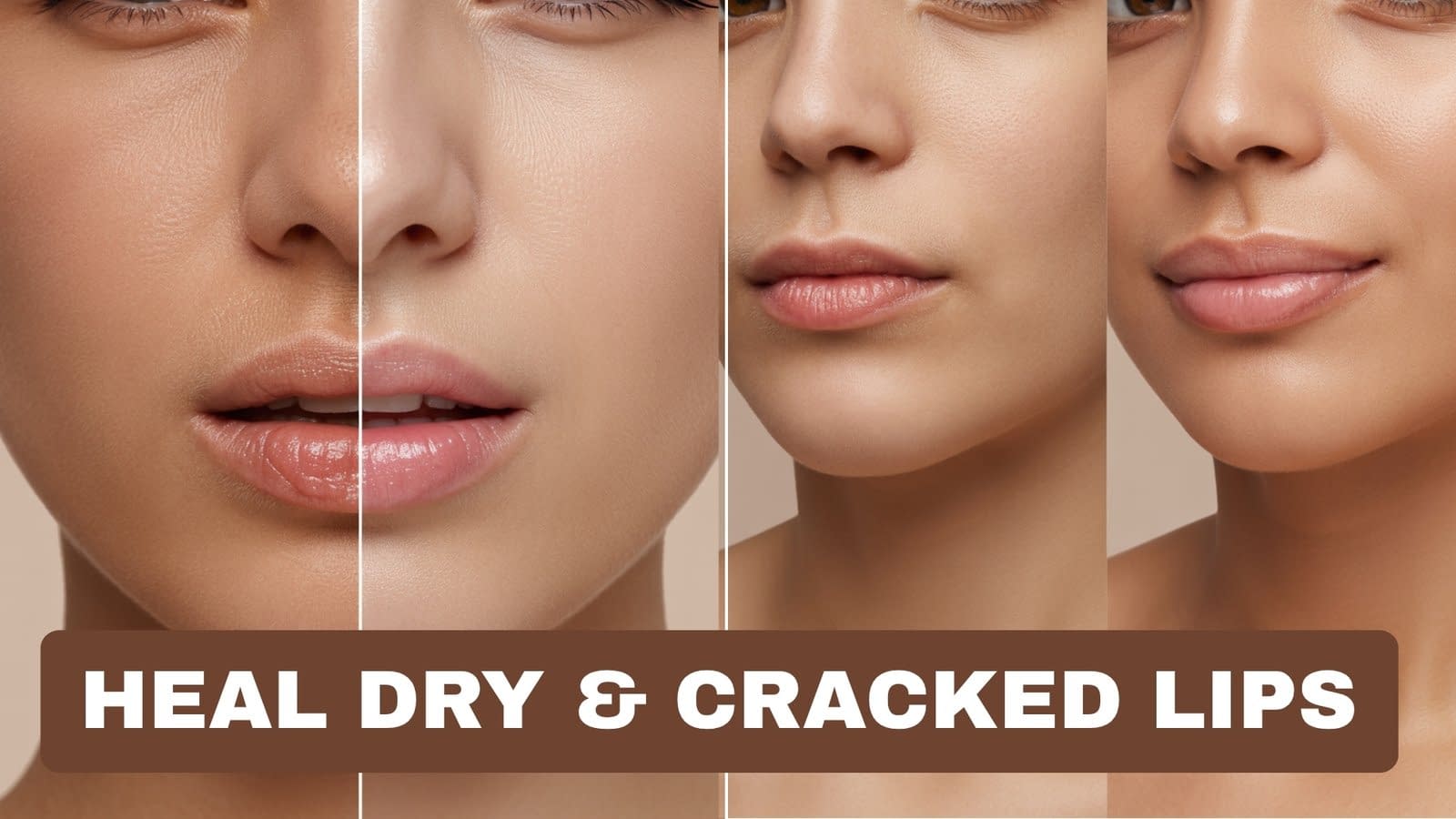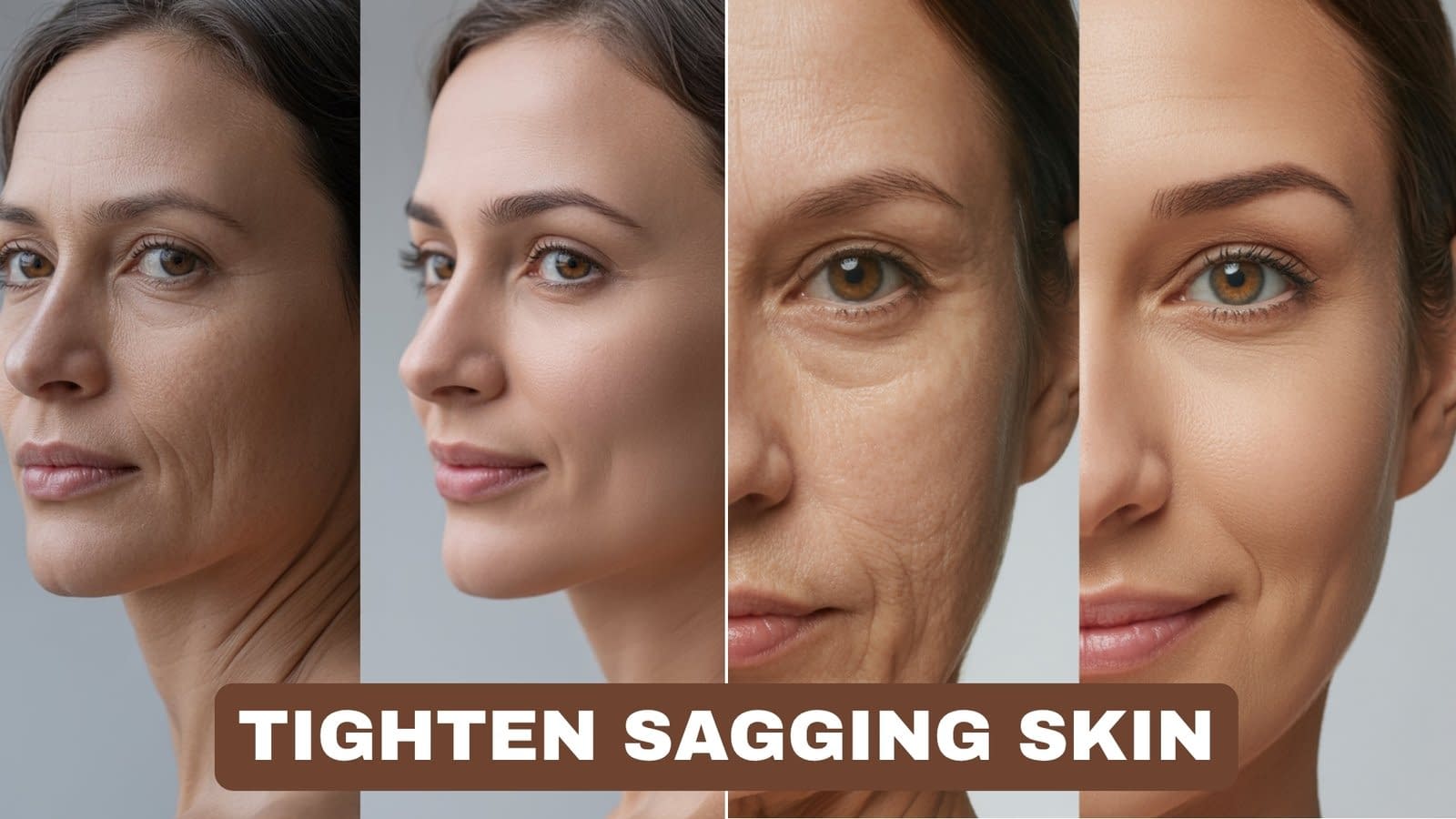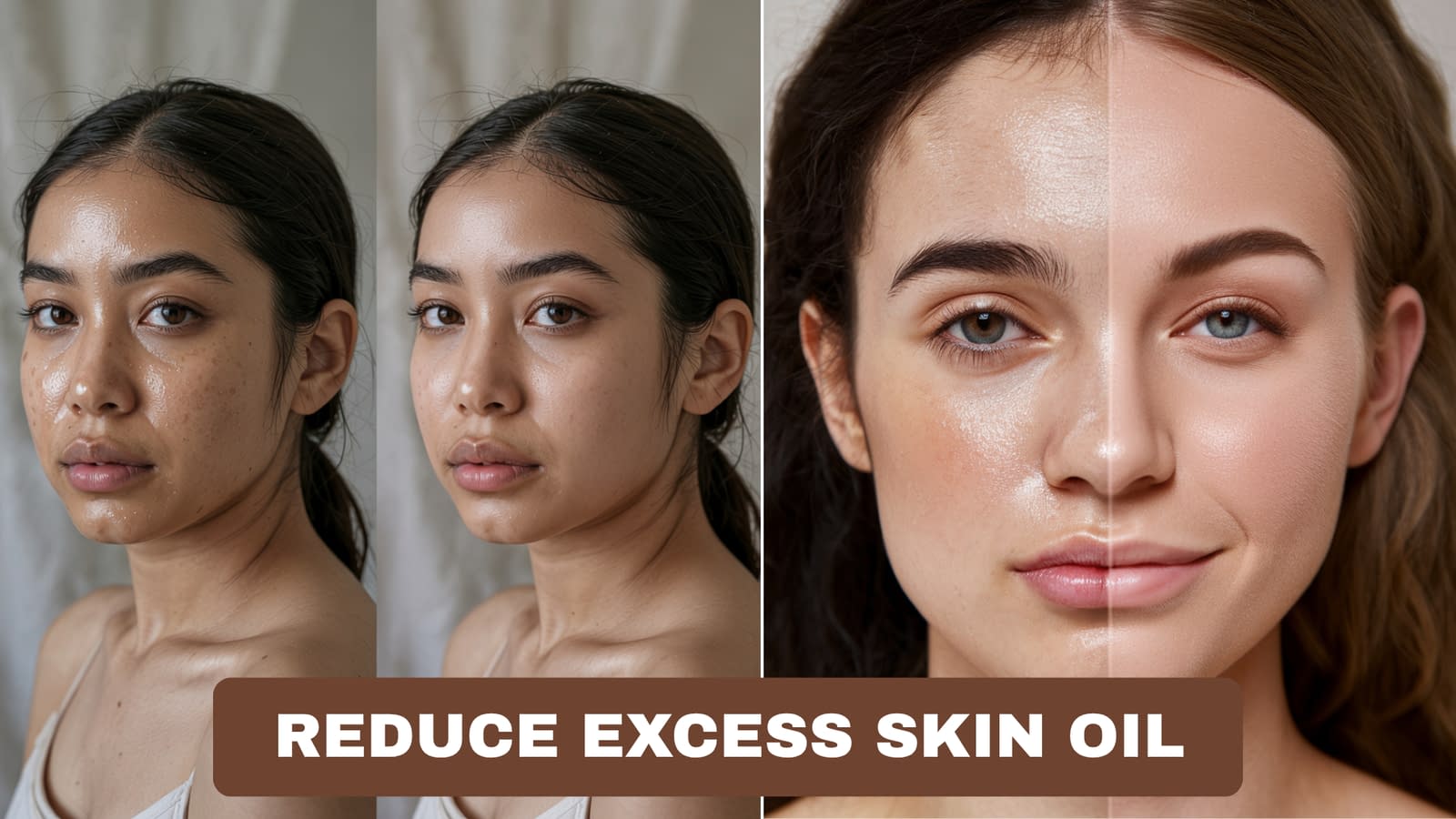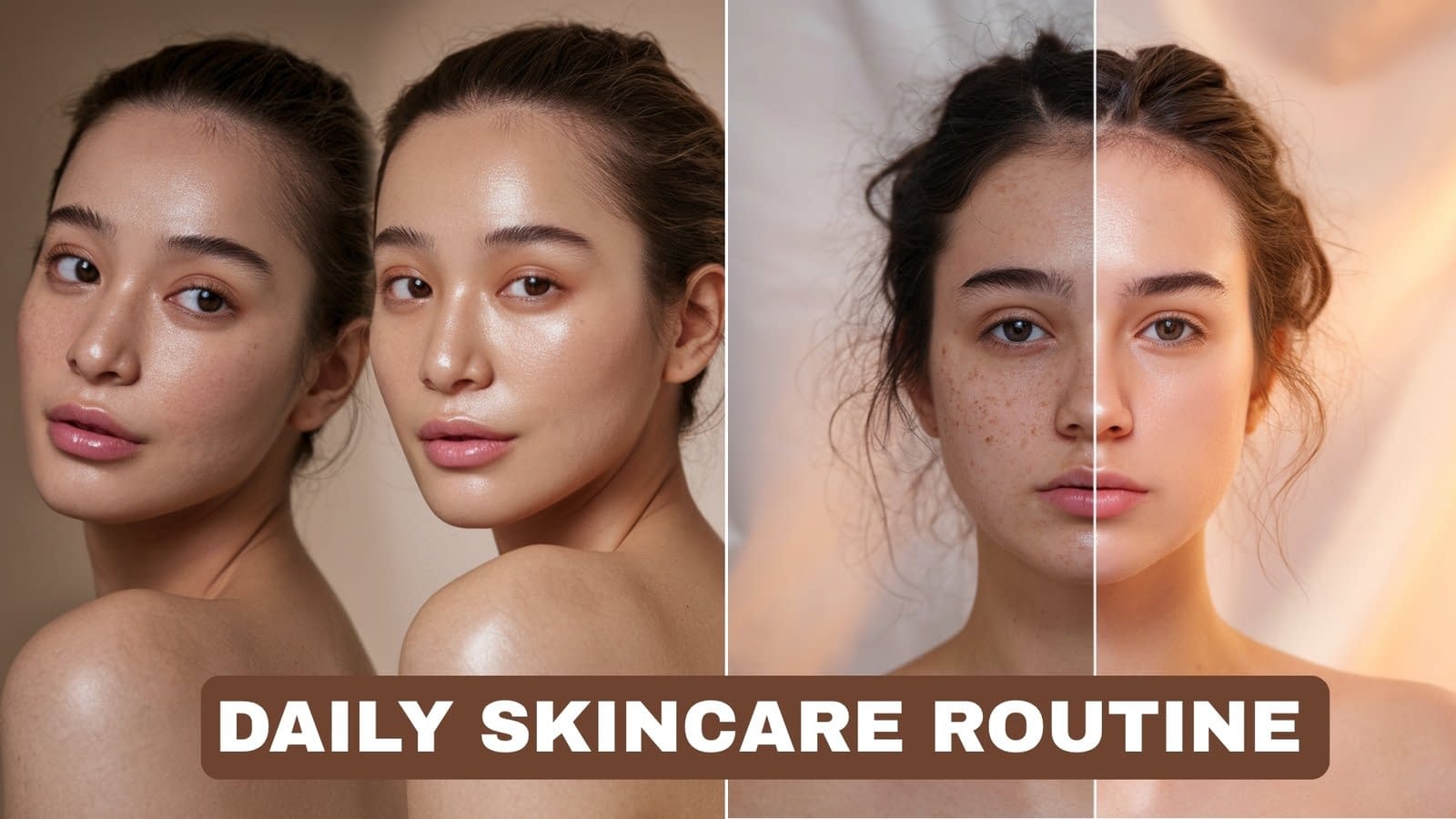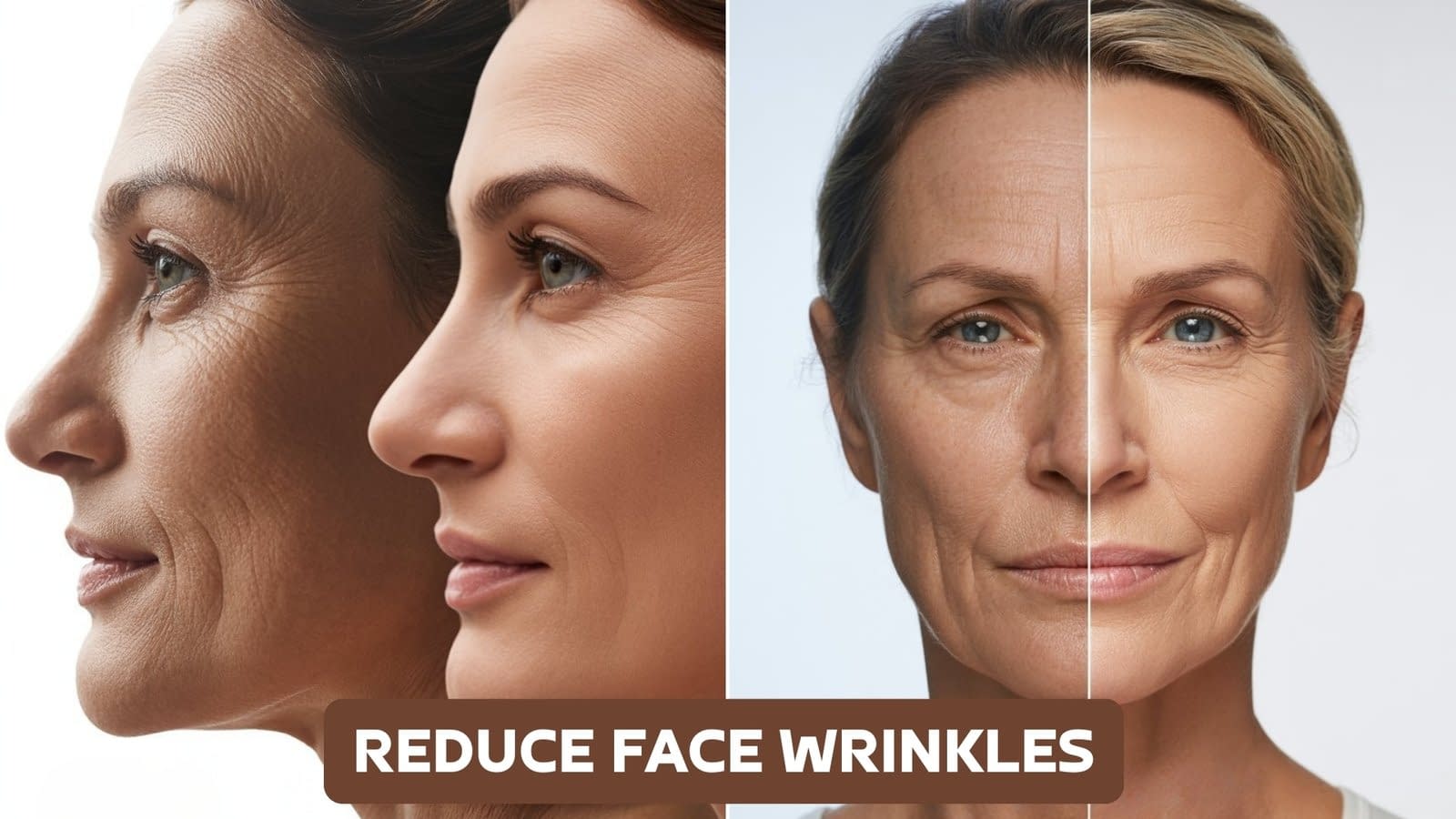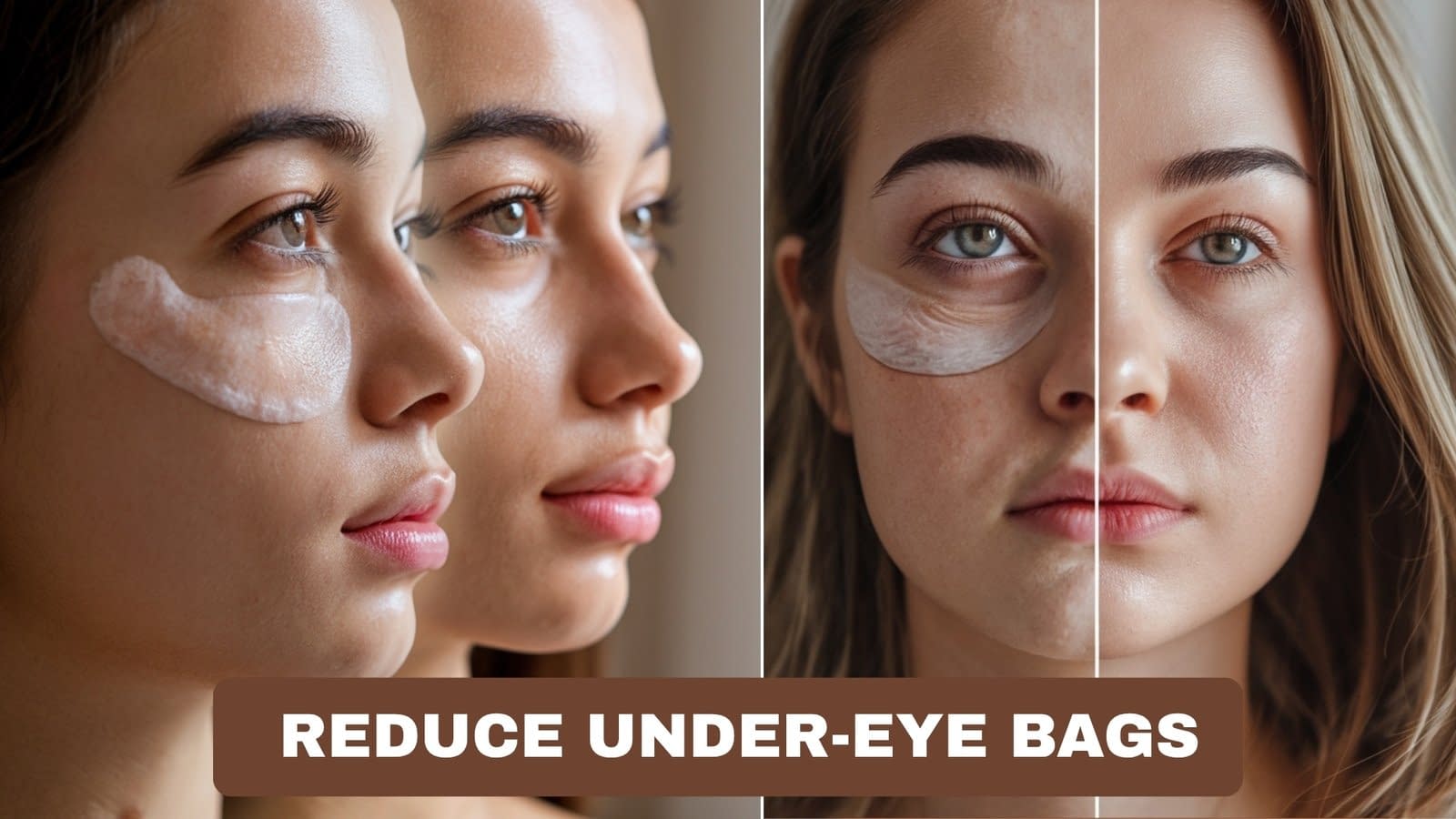Cracked, painful lips are annoying — they make eating, smiling, and talking uncomfortable. The good news: most cases respond quickly to targeted, natural care. This guide explains why lips chap, what helps from the outside (oils, masks, scrubs) and inside (hydration, nutrients), step-by-step home treatments, simple daily habits to prevent recurrence, and clear signs that mean you should see a clinician.
Read this as a gentle, practical plan you can follow today. I include safe DIY recipes, a morning/evening routine, troubleshooting tips, and when to get medical help.
Why Your Lips Get Dry and Cracked
Understanding the common causes behind chapped lips
Lips are fragile. They lack oil glands, have a thin protective layer, and are exposed to the elements — that combination makes them prone to dryness and splitting. Common causes include:
- Environmental exposure — wind, cold, low humidity and sun all pull moisture away.
- Dehydration — not enough fluid intake reduces saliva and skin hydration.
- Lip licking and irritation — saliva briefly moistens the lips, then evaporates and removes more moisture than it added. Repeated licking creates a cycle of irritation.
- Allergic or irritant contact — ingredients in some lip balms, toothpaste (flavorings, cinnamon, SLS), cosmetics, or topical creams can cause contact dermatitis.
- Nutritional deficiencies — deficits in B vitamins (B2/riboflavin, B3/niacin, B6/pyridoxine), iron, zinc or essential fatty acids can present with chapped lips or cheilosis (fissuring at corners).
- Medications & medical conditions — isotretinoin (Accutane), some diuretics, chemotherapy agents or long-term retinoids commonly cause dry lips. Autoimmune conditions (e.g., Sjögren’s), hypothyroidism, or uncontrolled diabetes may be associated with dryness.
- Infections — candidiasis or fungal infection, and herpes simplex (cold sores) may cause cracking or blisters that look like severe chapping.
- Behavioral — mouth breathing (during sleep or nasal obstruction) dries lips overnight.
Key takeaway: the fix may be simple (moisturize + stop licking) or it may require addressing an underlying factor like medication, allergy, or nutrient deficiency.
The Importance of Hydration for Healthy Lips

How water intake affects your lip health
Water supports the body’s natural moisturizing systems. When you’re under-hydrated, mucous membranes (including lips) become dry and fragile.
Practical hydration rules
- Sip throughout the day rather than gulping only at meals. Keep a water bottle handy.
- A general guideline for many adults is roughly about 2 liters (8 cups) daily, but needs vary by climate, exercise, pregnancy, and body size — aim to avoid concentrated dark urine and persistent thirst.
- Limit diuretics (large amounts of caffeine or alcohol) when you’re trying to heal chapped lips — they increase fluid loss.
- Stimulate saliva if mouth dryness is an issue: chew sugar-free gum (xylitol), or suck on xylitol mints after meals. Saliva helps clear debris and maintain a mild protective film — but remember saliva licking is not a treatment.
Environment & night habits
- Use a humidifier in dry months or in heated rooms. A bedroom humidifier overnight often shows big improvement for people who wake with cracked lips.
- If you breathe through your mouth at night, treat nasal congestion (saline rinse, see a clinician) because mouth breathing dries the lips.
Natural Oils and Butters That Soothe Cracked Lips
The best natural moisturizers for quick relief
Lip rescue depends on two things: a humectant or emollient (to attract/retain moisture) and an occlusive (to seal it in). Here are safe, natural ingredients and how to use them.
Top-choice natural oils & butters
- Beeswax (occlusive) — forms a breathable barrier that seals moisture; used in balms.
- Shea butter (emollient + some occlusivity) — rich, nourishing, good for dry or irritated lips.
- Cocoa butter — thick and protective, pleasant scent; good overnight.
- Coconut oil — emollient, antimicrobial properties; melts on lips, but can be slightly comedogenic for some. Not recommended if you react to coconut.
- Jojoba oil — technically a liquid wax very close to skin lipids; lightweight and unlikely to irritate.
- Sweet almond oil — rich in fatty acids; gentle for most people (avoid with nut allergy).
- Avocado oil, argan oil, olive oil — nourishing, use in blends or masks.
- Lanolin — extremely effective at preventing water loss; natural (from wool) and widely used in nipple/lip balms. Avoid if you prefer vegan products or if allergic to lanolin.
How to choose
- For day use, lighter oils (jojoba, sweet almond) or a balm with beeswax + light oil are convenient.
- For night repair, heavier occlusive balms (beeswax, lanolin, cocoa butter, shea) applied in a generous layer are best — consider an overnight “seal” with petroleum jelly if you don’t need all-natural only. (Petroleum is extremely effective and safe for occlusion; if you prefer natural-only, beeswax + shea is a good alternative.)
- Patch test any new oil on inner forearm to screen for irritation or allergy.
How to apply oils/butters (step-by-step)
- Clean lips with lukewarm water and a soft cloth to remove flakes and residue. Pat dry.
- If lips are flaky, lightly exfoliate first (see section 4).
- Apply a thin layer of a light oil or balm during the day: press with fingertip and rub in gently. Reapply after eating/drinking if needed.
- At night, apply a thicker layer (balm or butter) and leave it on — consider adding an occlusive layer (beeswax or lanolin) if cracking is severe.
- Avoid flavored/perfumed balms if you tend to pick or lick lips — flavorings can trigger licking.
Safety notes
- If allergic to nuts, avoid almond/argan. If you have sensitive skin, avoid essential oil additions — they can irritate.
- If lips show increasing redness, swelling, or burning after an oil/balm, stop and rinse; see a clinician if severe.
DIY Lip Masks and Scrubs You Can Make at Home

Gentle, effective home remedies to restore softness
Below are simple recipes using pantry and household ingredients. They’re safe when used properly — follow the frequency and patch-test advice.
A — Gentle sugar lip scrub (exfoliation)
Why: Removes flaky dead skin so moisturizers penetrate better.
Use: 1–2× weekly only (too frequent exfoliation worsens chapping).
Recipe
- 1 tsp granulated sugar (fine)
- 1 tsp honey or olive oil (honey is antibacterial; olive oil is nourishing)
- Optional: ½ tsp coconut oil
How to use
- Mix into a paste.
- Apply to dry lips, gently rub in small circular motions for 20–30 seconds.
- Rinse with lukewarm water and pat dry.
- Immediately apply a nourishing balm or oil.
Caution: Do not scrub forcibly — be gentle to avoid microtears.
B — Soothing honey-yogurt lip mask (calming & hydrating)
Why: Honey is natural antimicrobial and humectant; yogurt has lactic acid and soothes.
Recipe
- 1 tsp plain full-fat yogurt
- ½ tsp raw honey
How to use
- Mix and apply a thin layer to lips for 10 minutes.
- Rinse and pat dry. Apply balm.
- Use as needed, up to every other day.
Caveat: Don’t use if you’re allergic to dairy or bee products.
C — Overnight repairing balm (deep seal)
Why: Heavy occlusive to lock in moisture all night.
Recipe
- 1 part beeswax pellets (e.g., 1 teaspoon)
- 2 parts shea butter (2 tsp)
- 3 parts jojoba or sweet almond oil (3 tsp)
How to make
- Melt beeswax + shea butter + oil together in a double boiler until liquid.
- Optional: remove from heat and stir in 1–2 drops of vitamin E oil as preservative/antioxidant.
- Pour into a small tin or lip pot and allow to cool. Cool fully before use.
How to use
- Apply a generous layer at night to sealed/clean lips. This creates a protective film and supports overnight repair.
D — Quick cool compress for soreness
If lips are painful and inflamed (not infected), a cool compress can calm them.
How to do
- Wrap an ice cube in a clean cloth or use a chilled spoon.
- Press to lips for 30–60 seconds. Repeat 2–3 times.
- Apply a soothing balm afterward.
E — Natural options to avoid
- Avoid lemon juice, undiluted essential oils, or baking soda scrubs on open cracks — they can sting and further irritate.
- Avoid too-aggressive peels (glycolic/salicylic) unless guided by a dermatologist.
Healing Foods That Nourish Lips from Within
Nutrients that support lip hydration and repair
Skin repair is a metabolic process. Eat foods rich in the nutrients that support healing, skin barrier integrity and hydration:
Key nutrients & food sources
- B vitamins (B2/riboflavin, B3/niacin, B6, B12, folate): deficiency can cause cheilosis (cracked mouth corners).
- Foods: eggs, dairy, lean meats, fortified cereals, leafy greens, legumes, nuts, seeds.
- Vitamin C: needed for collagen formation and repair.
- Foods: citrus fruits, strawberries, kiwifruit, bell peppers, tomatoes, broccoli.
- Vitamin E: antioxidant that supports skin barrier.
- Foods: nuts (almonds), seeds (sunflower), vegetable oils, spinach.
- Zinc & iron: both important for wound healing; low levels can slow repair.
- Foods: red meat, poultry, seafood, beans, lentils, pumpkin seeds, fortified cereals.
- Essential fatty acids (omega-3s): maintain membrane integrity and reduce inflammation.
- Foods: fatty fish (salmon, mackerel), flaxseeds, chia, walnuts, algae oils.
- Protein: every repair process needs protein — ensure adequate intake for tissue regeneration.
Practical meal ideas
- Breakfast: greek yogurt with berries + chia seeds (B vitamins, vitamin C, omega-3 precursor).
- Lunch: grilled salmon salad with mixed greens and sunflower seeds (omega-3, zinc, vitamin E).
- Snack: hummus with raw bell pepper for vitamin C and protein.
- Dinner: chicken or lentil stew with kale (B vitamins, iron, vitamin C).
Supplementation
- If you suspect a deficiency (chronic, widespread skin issues, hair loss, fatigue), talk with your clinician about blood testing and supplements. Do not start high-dose supplements without advice — e.g., high vitamin A is toxic in excess.
Lifestyle Habits That Prevent Chapped Lips

Simple daily changes to keep lips healthy year-round
Prevention is often easier than repair. Build these habits into daily life:
Daily care routine (simple)
- Morning: gentle wash, light lip oil or balm with SPF (broad-spectrum SPF 15–30) if sunlight is expected.
- Throughout the day: reapply balm as needed, avoid licking your lips.
- Night: gentle cleanse, apply a thicker ointment or overnight balm.
Other practical habits
- Choose a good lip balm: look for humectants (glycerin, honey), emollients (shea, oils), and occlusives (beeswax, lanolin). Avoid balms with camphor, phenol, menthol, or strong fragrances if you’re sensitive — they can sting and cause more licking.
- Protect from sun: the lips get sun damage too — use a lip balm with SPF and reapply after eating.
- Avoid lip products with known irritants: cinnamon, strong mint, propolis (beehive product) can irritate some people.
- Stop lip biting/peeling: keep nails short, use a fidget substitute if you pick.
- Humidify indoor air in winter; heated air dries skin.
- Treat nasal congestion so you breathe through your nose, not your mouth. Saline nasal sprays, steam inhalation, or allergy management are helpful.
- Quit smoking & reduce alcohol: both worsen lip dryness and impair healing.
- If you use retinoids or topical acne meds, talk with your prescriber about lip care strategies — retinoids often require extra moisturizing.
Quick habit checklist
- Drink water regularly
- Use SPF balm outdoors
- Avoid licking & flavored balms if you lick lips
- Use humidifier at night
- Eat nutrient-rich whole foods
When to See a Doctor for Persistent Lip Problems
Recognizing signs that require medical attention
Most simple chapping improves in days to a week with consistent care. See a healthcare professional (dentist, dermatologist, primary care) if you have any of the following:
Red flags
- Symptoms persist > 2 weeks despite home care.
- Severe, painful cracking or bleeding that limits eating/drinking.
- Signs of infection: increasing redness, warmth, swelling, pus, or fever.
- White patches that won’t rub off (may need evaluation for oral candidiasis or leukoplakia).
- Recurrent blisters or grouped sores — could be herpes simplex (cold sores); antivirals can help if diagnosed early.
- Cracks only at the corners of the mouth (angular cheilitis) — often due to yeast/bacterial infection and may require antifungal/antibiotic therapy plus correction of underlying causes (vitamin deficiency, ill-fitting dentures).
- Other systemic symptoms — weight loss, persistent fatigue, skin rashes, or signs suggesting systemic disease (autoimmune conditions, thyroid disease) — warrant medical evaluation and blood tests for deficiencies (B12, iron, zinc) or systemic causes.
What the clinician may do
- Examine the mouth and lips, possibly swab for bacteria/yeast, order blood tests for deficiencies, review medications, or prescribe topical/oral antifungals, antiviral treatment, or topical steroid for inflammatory dermatitis as appropriate.
Quick Step-by-Step Rescue Plan (What to do today)

Follow this 7-point mini plan to get fast relief and support healing.
- Clean gently — lukewarm water, soft cloth to remove flakes. Pat dry.
- Light exfoliation (if flaky) — sugar scrub (1×) gently, then rinse.
- Hydrate — sip water frequently and use a humidifier if indoors.
- Apply a healing balm — small amounts of jojoba or a beeswax-shea balm during the day; thick lanolin or beeswax mix at night. (See DIY balm recipe above.)
- Avoid triggers — stop licking, avoid flavored/medicated lip balms, and cut back on alcohol and spicy food while healing.
- Eat nutrient-dense meals — include protein, leafy greens, fruit for vitamin C, nuts/seeds for vitamin E and zinc, and fatty fish for omega-3s.
- Monitor — if no improvement in 7–14 days or worsening symptoms, see a clinician.
FAQ — Quick Answers
Q: How often should I use a lip balm?
A: Frequently during the day as needed, especially after eating and before going outside. Use a thicker waxy balm at night.
Q: Can petroleum jelly heal cracked lips?
A: Yes — petroleum jelly is an excellent occlusive that prevents moisture loss and supports healing. It’s safe and effective, though not “natural.” Use it if you don’t prefer plant-based occlusives.
Q: Are flavored balms bad?
A: Flavorings can encourage licking and may cause irritation in sensitive people. If your lips worsen with flavored balms, switch to an unflavored, simple formula.
Q: Can cold sores look like chapped lips?
A: Herpes simplex typically causes grouped blisters that crust; chapping is more generalized dryness and fissures. If you suspect cold sores, see a clinician; early antiviral therapy is most effective.
Final Words
Healing cracked lips is usually straightforward when you combine external care (gentle exfoliation, protective occlusives, natural oils), internal support (hydration and nutrient-dense foods), and better daily habits (no licking, sun protection, humidified air). Start with a gentle routine today: clean, lightly exfoliate if needed, apply a nourishing balm, drink regularly, and use a humidifier overnight. If cracks don’t improve in a week or two, or if you notice severe pain, bleeding, recurrent sores or signs of infection, seek medical evaluation.


